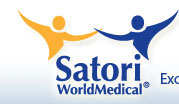Companies to offer free foreign travel for their sick


These are the people in self-insurance pools. Companies use insurers for administrative and back-office functions, but they basically manage their own risks, and pay the bills directly for employee care.
This gives them the power to bend the cost curve, and one way they might do it is through medical tourism.
Steven Lash, CEO of Satori Medical World, has a patent on how to do this. (Satori is a term used by Japanese Buddhists for a sudden flash of individual enlightenment.)
Here is how it works.
Lash has spent the last year building a network of hospitals around the world that offer first-rate care, based on international standards, at prices a fraction of what you would pay in the U.S., plus experience dealing with English-speaking patients.
"We are sending people to Mexico, to Monterrey. We hope to add Mexico City. At the first of the year they will be going to Panama and Costa Rica. Then we have the Philippines, India, Thailand, Turkey and Singapore."
Lash has also spent time calling on these self-insured companies, persuading them to his idea, trying to get a chance. "We would become embedded as a health care option for their clients. They would have a choice of going to five network options and we'd be the sixth. We don't replace the benefit. We become an option."
To make sure this works, Lash will also choose patients carefully. If you have co-morbidities, stay. If your case is just emerging, stay. The benefit will be offered to those who need a defined procedure only.
The savings here can be huge. The patent covers what happens to them.
"We have a business method patent whereby the employee gets to share in the savings through a deposit in a Health Reimbursement Account (HRA).
"If the savings are $40,000, the employer shares $8-10,000 with the employee and makes a deposit in their HRA. This money can then be used to do co-pays, deductibles and for further premiums."
HRAs are defined by the Treasury Department, and are different from Health Savings Accounts in that they are "100% employer funded, and non-portable. It rolls over. There's no limit on what you can put in. And it can pay for first dollar coverage."
There are incentives here for both sides. The self-insurer pockets big savings, plus they build loyalty because the employee isn't going to leave with a big HRA balance. The employee, meanwhile, may save enough to pay for the next year's premiums, or the birth of their next child.
Yes, you're exporting the practice of medicine overseas, but that's the market. Those with real insurance won't see this for years because such things need to go through state regulatory processes.
Lash has just built this machine, and Satori only sent out its first patient recently. A few more will go out in the fourth quarter, and as many as 200 next year. But "we have been getting quite a bit of traction" and it's easy to see why.
Health reform proponents are far too polite to charge opponents of reform with killing American jobs, so what can go wrong?